| Don't like ads? | No ads |
*Bourbon Culture is reader-supported. When you buy through links on our site, we may earn an affiliate commission.
For readers who aren’t familiar with the terms shared among enthusiasts, “shelf turd” may sound strange and just a little bit crass.
What does it mean? A shelf turd is a bottle that usually sets on an unreachable shelf or inside a glass display case in your local liquor store that never gets purchased.
Every time you come back into the store, it’s still there. And furthermore, if you walk into other stores, you’ll usually see that same bottle still waiting to be bought.
But why aren’t these bottles being purchased? There are usually many small reasons that end up snowballing into a larger reason that makes everyone avoid it. Everyone, that is, except for taters.
A wave of taters like we’ve never seen before
One interesting thing to note before we dive into the reasons that bottles set on shelves collecting dust; writing this article was like trying to hit a moving target.
It took me almost 3 months to finish it because some bottles that were common shelf turds began to get a cult following and have been vanishing from shelves.
The reason is because the bourbon world is experiencing a wave of taters like we’ve never seen before. What is a “tater,” you ask?
A tater is loosely defined as a person with more money than sense, just like my example above of the person who usually buys those shelf turds.
They’re also so afraid of the Fear Of Missing Out (FOMO) that they don’t want to be the last one to recognize a trend, so they buy whatever they can find that is expensive.
They also generally don’t recognize things like value or the integrity of a brand and their label.
Common traits of a shelf turd
To recognize a shelf turd, let’s look at some common traits. The first and most important is high price. Almost always, shelf turds are priced at or above $120.
It’s at this price point that retailers and distillers think that the average consumer is going to automatically assume that the bottle is special.
It also makes it easy for stores to mark up the price to $150 to get some extra profit or even mark it down to $110 to make consumers think they’re getting a deal.
All of this is not to say that every bottle with a price at or over $120 is a guaranteed shelf turd. However, those bottles usually have a pedigree from an established Heritage Distillery.
What do I mean by this? Well some of the bottles that command that high price are usually limited releases that are named after core offerings in a distiller’s normal lineup. Take Buffalo Trace for instance.
Many of the Buffalo Trace Antique Collection (BTAC) carry familiar names already associated with the brand. George T. Stagg (who the distillery was named after for a short time) or Eagle Rare 17 (an older version of the already popular Eagle Rare Single Barrel) are two examples.
Even Heaven Hill offers premium versions like Heaven Hill Select Stock or William Heaven Hill labels. But a shelf turd will typically have a product name that doesn’t resonate throughout the community.
In some cases the producer will really stretch to give it a fancy whiskey name by putting words such as “Farm,” a historical event or even names of defunct brands that haven’t existed in decades.
Another way to identify these bottles is by examining its proof versus its age. There are plenty of $120+ bottles out there with an age statement of 12 years or more, but they have a very low proof.
In modern times, an exquisite bourbon that is worth the money carries both a high age statement and a high proof. This is because those barrels are rare to find at a high age while also not being over-oaked or with flaws.
When a whiskey becomes over-oaked or develops flaws, the only solution is to either blend it into a batched product or sell it to another producer for a slightly reduced price.
Those Non-Distiller Producers (NDPs) are frequently on the hunt for whatever barrels they can find with high age statements and will try to blend away or “proof down” the flaws of those barrels.
It is the preferred method of many NDPs to proof down a barrel to make the whiskey more drinkable rather than blending in a younger barrel (because it will lose its age statement).
Price
Next we’ll talk about price. But wait, didn’t we already? Yes, but this price has to do with the price the producer wants to retail it at; AKA “overcharging.”
The most guilty culprit on the list is the infamous Whistlepig Boss Hogg releases. Shortly before Dave Pickerell left Whistlepig, he instituted a policy whereby he would artificially increase the Boss Hogg’s retail price so much that nobody could make a profit by re-selling them on the secondary market. And to a certain degree it has worked.
Three years later, the lastest release of Whistlepig’s Boss Hogg still carries around a $500 price tag for no other reason than Dave wanted to stick it to the secondary.
Boss Hogg does use some very well-aged rye whiskey that is usually finished in exotic barrels, but there is no way this would be anything more than $250 if it came from another producer. Similarly, brands take advantage of their customers by using their reputation to automatically assume that they can charge a premium.
Kentucky Owl is an example of this when they had previously been releasing the widely acclaimed 11 and 10 year old rye whiskey batches but then released Confiscated with no age statement for the same price.
All this shows is their willingness to take advantage of ignorant consumers. Producers with more integrity typically base their retail bottle prices on the cost of the liquid inside, the packaging and the associated value of the rarity of that liquid. Not just reputation.
So next time you’re in the store and thinking about buying one of these bottles, let me give you some reasons why it’s a bad idea.
Calumet Farms 14 year Single Rack Black Bourbon
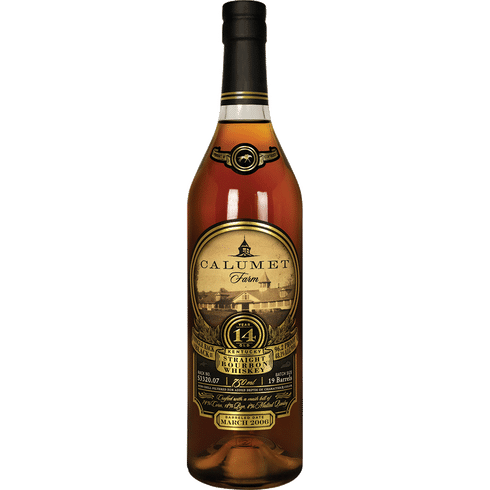
Calumet Farm has been sourcing bourbon from Barton for a while now. They tried to draw in buyers with age statements on the front of the bottle and their prices were reasonable enough.
But in 2020, they began to raise the prices across the board (notably on their 10 and 12 year old bourbons) while simultaneously rolling out a 14 year old bottle that was proofed down to 96.2.
The retail price tag was somewhere around the $120 mark but honestly the liquid inside is made by the one of the largest producers of sourced Kentucky Bourbon: Barton Distillery.
If you observe the $60 price point of Barton’s own 1792 Aged 12 Years botte (roughly $5 per year aged), then the value proposition of Calumet Farm 14 year seems pretty off (roughly equating to $8.50 per year aged) .
While I’m not arguing that $8.50 per year aged is actually a good price compared to what some other distilleries are charging, it’s hard to see (and taste) that extra price difference.
The bottom line is Calumet Farm 14 Year is not unique or special and your money could be spent on much more flavorful bourbon with more proof at a lower price.
High West Bourye
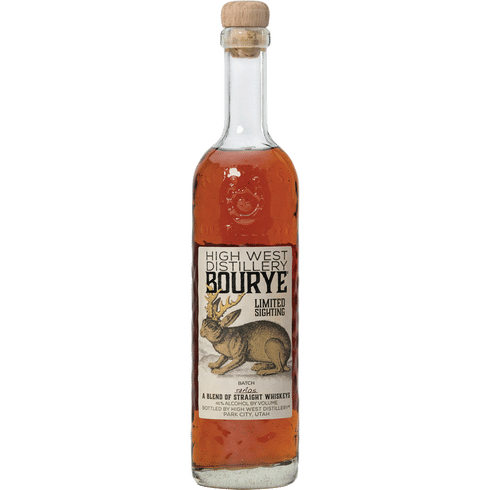
Typically found on shelves for $80 to $100, this is High West’s most expensive bottle of whiskey that is regularly released aside from MidWinter’s Night Dram.
The recipe for Bourye changes every year but is usually always containing a blend of around 10 year old MGP bourbon and 10 year old MGP rye whiskey (some years it’s been much higher!). The downside is Bourye is proofed down to 92 proof, making it the same proof that all of their other standard labels are bottled at.
But why does this shelf turd, turd so hard? Frankly because of the difficult name recognition. Many potential customers fail to recognize what the product is (after all, there’s no mention of bourbon or rye whiskey on the front of the label).
That’s because the name “Bourye” is a mix of the words “bourbon” and “rye.”
And even after people realize that it’s a blend of two different whiskies, it will turn off the potential buyers that don’t like rye whiskey.
Also the lack of an age statement on the bottle will deter potential customers from spending almost $40-$60 more than the cost of other bottles in their core lineup.
This may be the one bottle that does not really deserve to be on the list of shelf turds, yet it is because I continue to see them all over the place.
Should High West ever increase the proof on these bottlings to barrel strength, I am almost positive that enthusiasts will swallow these up immediately. But until them, continue to see these on the shelf where they’ll stay.
Sam Houston 14 year
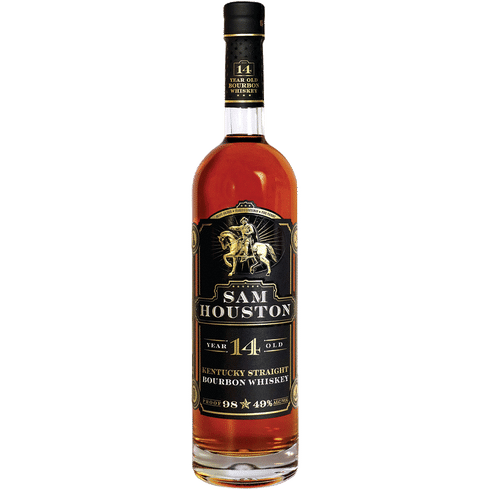
The brand “Sam Houston” is owned by Jefferson’s. Jefferson’s has always been an NDP who is committed to sourcing bourbon, experimenting with it (such as finishing it wine or rum barrels or putting it on a boat) and then marking it up accordingly.
Their source is widely known to be Barton, so the same reasons apply to why this 98 proof bourbon is probably not worth your $120 based on the reasons that I’ve covered with Calumet Farm 14 Year.
Whistlepig Boss Hogg
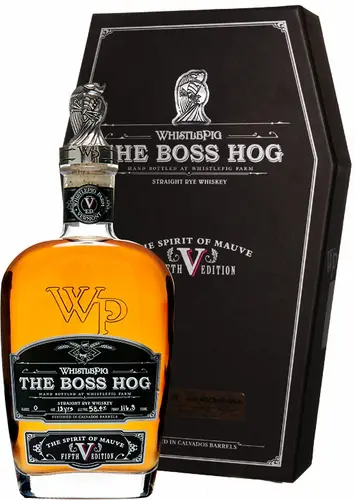
One of the biggest shelf turds on the list has to be Whistlepig’s Boss Hogg. I have tried Boss Hogg releases before and they’re actually quite good.
The packaging is really fun and creative as well. But at no time while drinking it will you ever declare that this rye whiskey is actually “$500 good.”
The MGP Rye whiskey that goes into these annual releases is typically aged into its “teens” (which is getting more rare these days), but may I suggest that if you want to still buy a shelf turd rye whiskey that still looks fancy and tastes great, that you seek out a bottle of Kentucky Owl Rye that I’m about ready to talk about.
At least you’ll save two to three hundred dollars in the end.
KY Owl Rye Batch 2, 3 or 4
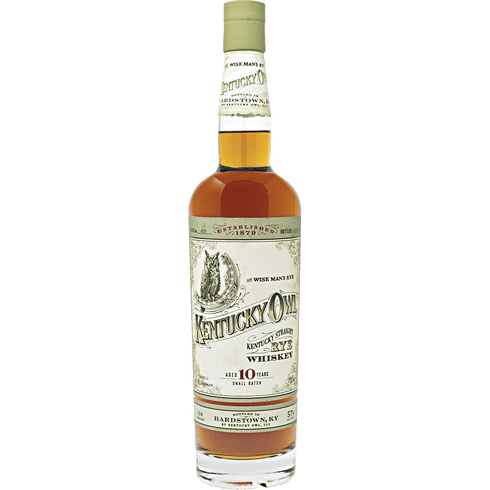
When Kentucky Owl initially released an 11 year old Rye Whiskey at $120, the bourbon and rye whiskey community balked. On one hand, there were extremely few bottles of Kentucky rye whiskey that wore an age statement that high, let alone one that was above 110 proof.
When reviews came out about how good it was, the bottles quickly disappeared off the shelves. Then batch 2 came out and had lost about 10 proof points, yet gained a new retail price of around $200.
People were angry at this decision, yet still bought it hoping to catch that same magic that made Batch 1 great. But Batch 2 was widely considered to be inferior which made Batch 3’s release an even harder sell as the proof went back up, but the age statement dropped a year.
Finally, Kentucky Owl threw the playbook out the window and slapped a pricetag of $300 on its final batch (Batch 4) and gave no reason for the price increase or why it was terminating their rye whiskey program all together.
Once again, most reviews of any batch of their rye whiskey ranges from outstanding to above average, but they’re hard to justify a pricetag that eclipses the $200 mark when you’re not exactly sure where the distillate is coming from.
Barrell Craft Spirits 15 year Bourbon
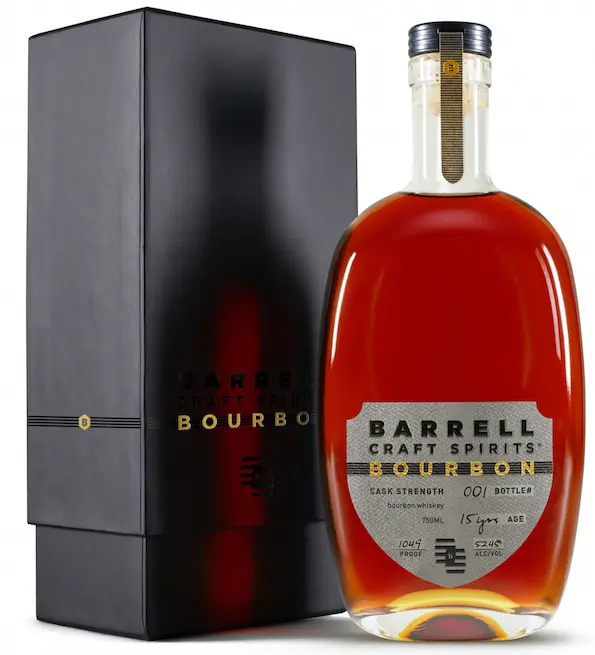
Barrell Craft Spirits founded its reputation on sourcing old barrels of bourbon from TN, KY and IN and blending them together into unique batches that highlighted certain traits.
They all carried retail price points of around $100, although many stores will have them priced at around $80. For the value of something so unique, I think it’s about right.
But when I saw the $250 price tag on their Barrell Craft Spirits 15 year bourbon, I was shocked and curious (as were many in the bourbon community).
The reviews for the first release in 2018 were generally positive while the 2019 release were a little less so. They also gained very little traction on the secondary market, which deterred flippers from clearing the shelves so they could turn a profit.
And while the jury is still out on the 2020 release, the bottom line is this: They don’t sell. It’s not that $250 is necessarily a lot of money for a 15 year old age statement, but this bottle has one thing going against it: It has bourbon sourced from Tennessee blended into it (Cascade Hollow, makers of George Dickel Bourbon).
I personally like most of the Dickel-sourced products that Barrell has put out, but many in the community don’t because of the vitamin/minerality note that is noticeable in everything it gets put in.
So even though Barrell blends together old barrels of (likely) MGP and Barton, the addition of that TN Bourbon actually becomes a cost detractor in many enthusiasts eyes. To them, it’s like putting a 99 cent can of Hormel Chili on top of a $1000 plate of caviar.
Knob Creek 15 Year Bourbon (Limited Edition)
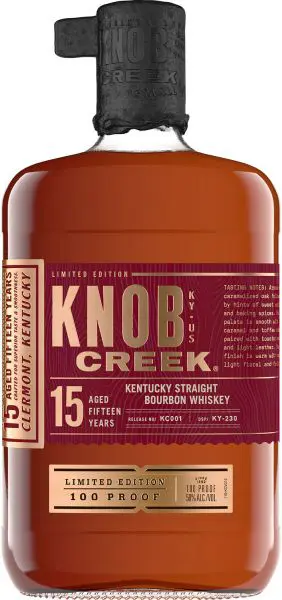
In 2020, Jim Beam released two new bottlings of Knob Creek: a 12 year old and 15 year old. The 12 year old product was bottled at 100 proof, averaged about $50 and wore a new, blue label.
The 15 year old Limited Edition product was also bottled at 100 proof and wore a new, red label. It also came in a wooden box. It’s retail price was $100.
While the reviews of the 15 year LE have generally been positive, bourbon enthusiasts everywhere were struggling to pull the trigger on it. These even included enthusiasts that liked Jim Beam products.
But why? It’s because as of 2020, Knob Creek was still releasing single barrels of Knob Creek that were being aged anywhere from 12-15 years old, bottled at 120 proof and were being selected by stores that had reputations of good barrel picks.
The worst part was that these single barrels were still being sold for around $50. So when enthusiasts saw the new labels being sold for more money, with less proof and less exclusivity, many simply said “no thanks.” And that is why you can still find these LE’s on the shelf today.
Kentucky Owl Confiscated
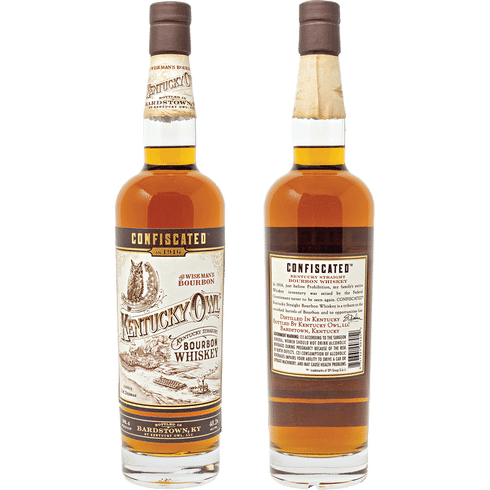
A second Dixon Dedman label makes our list with what is probably the butt of all jokes for a sourced whiskey. For about 5 years before it’s release, Kentucky Owl had been releasing some impressive products that were expertly blended.
The catch was that they were released in very small batches and were fairly exclusive. But after spirits behemoth Stoli bought out the brand, many believe they immediately ordered a Kentucky Owl product that would continuously be produced in order to rake in the money on a more consistent basis. So Kentucky Owl Confiscated was born.
A non-age stated (NAS) bourbon that was under 100 proof was now everywhere on the shelves with an asking price of $100…or more!
I actually saw this at a Total Wine grand opening for $140 recently and laughed. This bourbon is sweet, has little depth and is one of the most unremarkable bourbons at its price point.
Dozens of bottles exist that have more flavor, carry an age statement, provide better value and are just as easy to find than compared with Kentucky Owl Confiscated. Absolutely avoid this one at all costs.
Yellowstone Limited Edition (2019 and 2020)
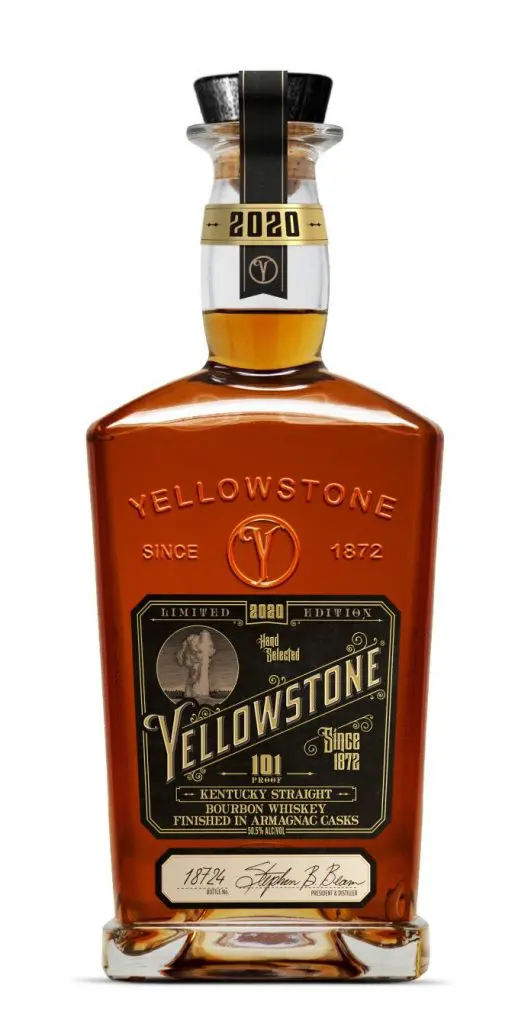
Yellowstone sources from, you guessed it, Barton. They are still a company that is trying to find their identity by sourcing whiskey, distilling their own and deciding what direction they should be taking to becoming a more recognized distillery among the larger Kentucky Bourbon Distilleries.
From 2015 to 2018, Yellowstone used a set of wine barrels that they’d finish older Kentucky Bourbon in. Once they were done with that year’s batch, they’d re-char the barrels and use them again.
They got 4 years out of them by doing this process and to everyone’s surprise, it worked! They changed things up in 2019 by releasing a Limited Edition that consisted of blending a variety of different aged bourbon and the reception was less enthusiastic.
Now in 2020, they’ve used sourced 7 year-old bourbon and finished in in Armagnac barrels. Technically, this was the lowest age of any LE bourbon released by them up to this point but they kept the same suggested retail price as the previous years: $100.
Although Armagnac-finished whiskey is a trend that really works well together, many other distilleries are charging about the same price for far older aged bourbon or whiskey being blended into the mix.
This Limited Edition seems like it should be around $75 for what it has to offer. But please don’t pay over $100 for this.
Whistlepig 15 Year Old Rye Whiskey
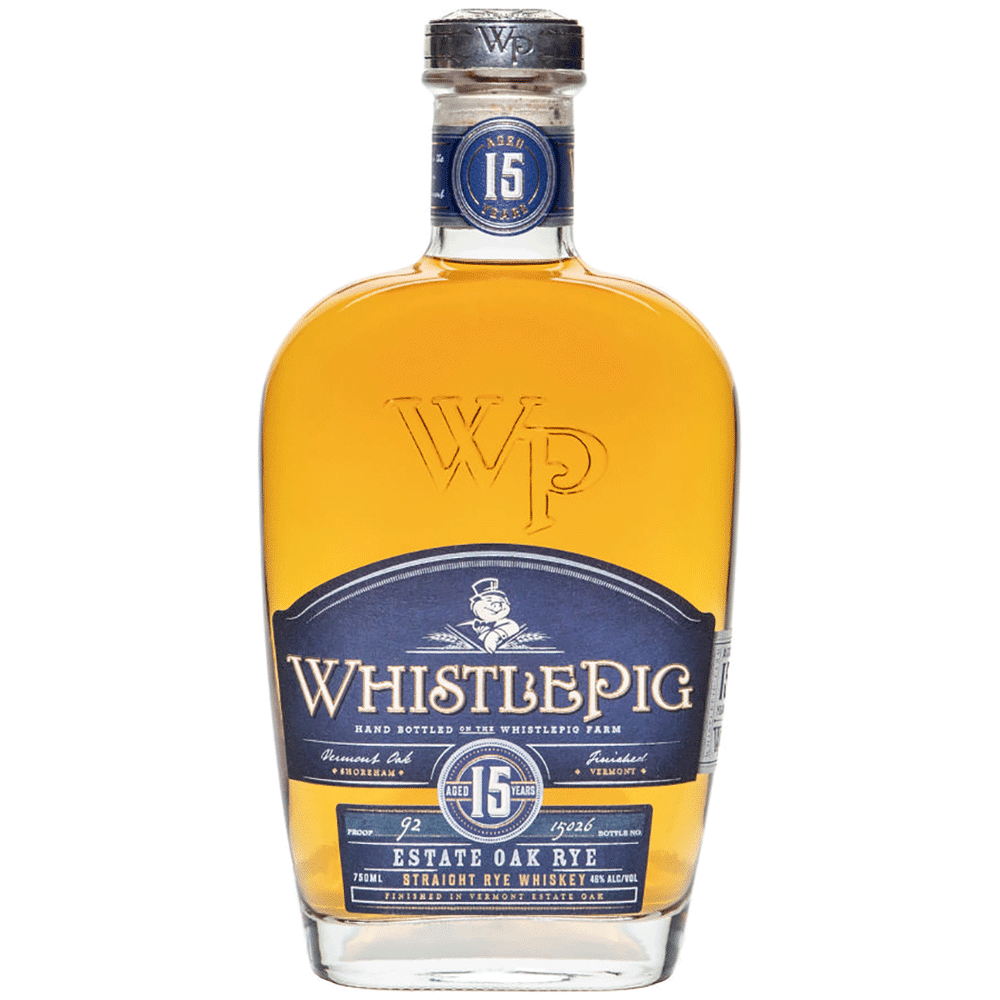
If we don’t count “Piggyback,” “Farmstock” or “18 Year Double Malt,” Whistlepig really only has 4 core labels in its lineup. The red label “Bespoke” carries a 12 year old age statement, but is 86 proof.
We’ve already covered “Boss Hogg” which wears a black label and is priced at $500. But Whistlepig carries two other labels in between: A yellow “10 Year” rye whiskey for $70-$90 and a blue “15 Year” rye whiskey for $200+.
But enthusiasts know that the yellow label also comes in a “single barrel” version that sells for only $10 more than the non-single barrel version and gets bottled at barrel proof.
These single barrels are typically much older (typically 12-15 years old). So the value proposition for the 15 year old Blue Label, which is typically bottled at 92 proof, is completely overwhelmed by the value proposition for the single barrels of the yellow label.
For more than half the price, you can get almost the same age statement and a whiskey that is bottled at barrel proof. It’s a no-brainer and a reason why these 15 year old bottles continue to set on the shelf.
Whistlepig 18 year old Double Malt Rye
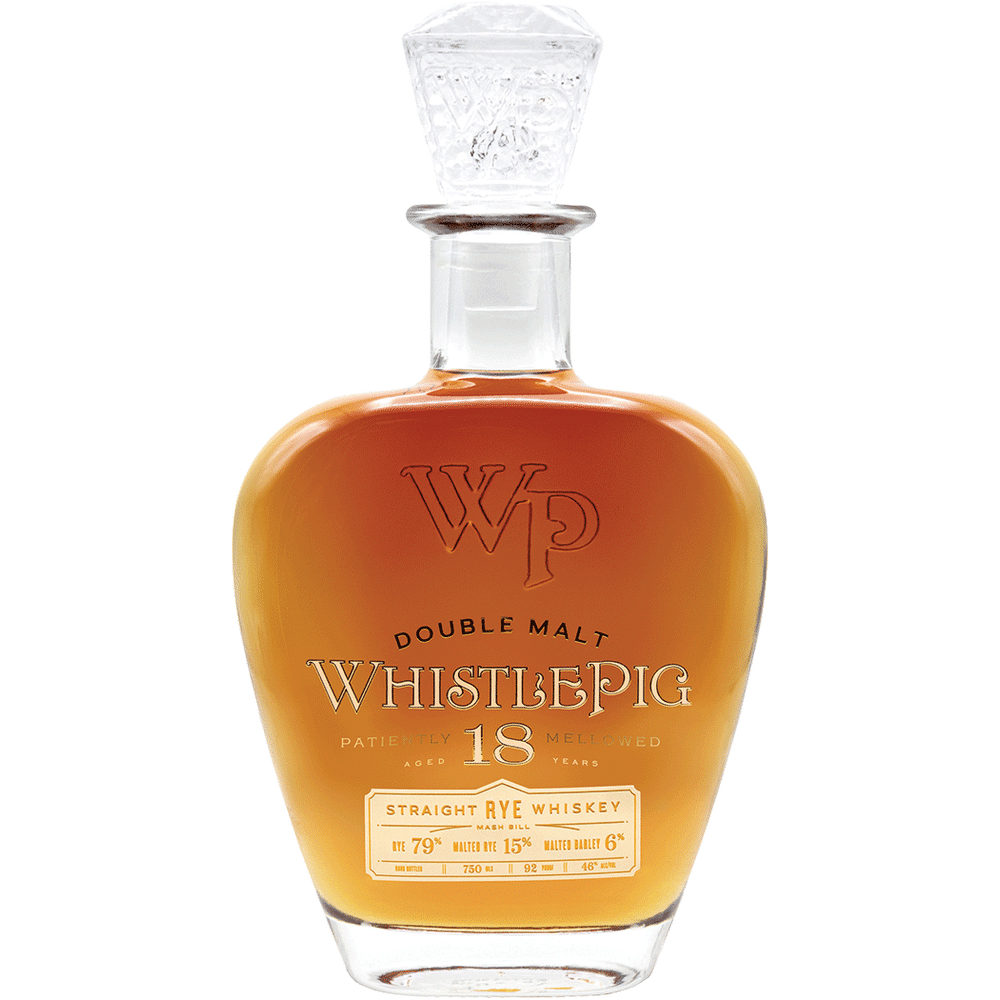
Just when Whistlepig thought there were no more suckers left to take money from, someone came across a stockpile of 18 year old rye whiskey produced not by Alberta Distillery (their go-to distillery for most of their products) but Hiram-Walker Distillery.
Hiram-Walker had a unique mashbill for this rye whiskey that used 79% rye, 15% malted rye, and 6% malted barley. While somewhat unique, the fact it was proofed down to 92 proof washed away most of the flavor.
Highly aged Canadian Rye Whisky is not that uncommon to our neighbors up north due to the use of used barrels (which won’t over-oak the distillate), slower rates of evaporation and the fact it needs to age longer due to the much colder temperatures.
In fact, a bottle of 90 proof, 18 year-old JP Wiser’s Whisky (which comes from Hiram Walker Distillery) can cost as little as $60 in some areas.
The emphasis on this particular bottle of Whistlepig seemed to be more about the decanters topper (made of pressed glass) than anything else.
And if you buy whiskey just as much for the liquid inside as you do the packaging, then you’ll find this to be about $200 over what it should be.
Jack Daniel’s Sinatra Select
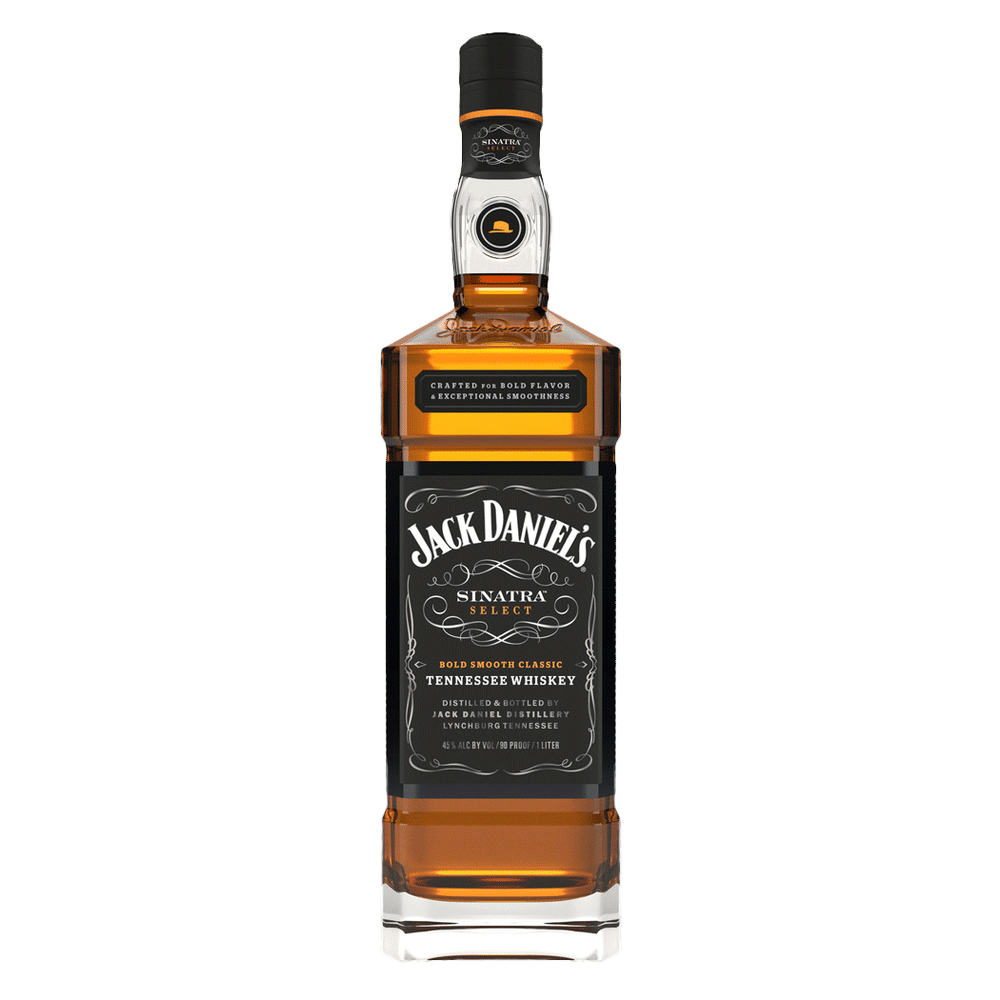
Jack Daniel’s likely sells more bottles of whiskey than any other single brand in the United States. Their popularity is known throughout the world and quite simply, they cannot produce enough of it.
But while I’m primarily talking about their 80 proof black label “Old No. 7” variety, they’ve really expanded their lineup recently.
One product that you can find consistently at many retailers comes in a fancy dark gray box and has the name “Sinatra Select” on the outside.
Priced at about $130 (or more!), this bottle of Jack claims to have came from barrels that had an extra step taken of having grooves etched on the inside for maximum surface area contact.
It’s likely not aged any more than other Jack products (nothing at Lynchburg, TN is aged over 6 years), so it’s not rare in that regards. It’s also bottled at only 90 proof!
So here we have a very young whiskey that uses the same mashbill as regular Jack Daniels, isn’t aged for any longer than 6 years and is only bottled at 90 proof.
Yet it is priced extraordinarily high. And this is why this bottle rarely moves. I just hope that those that are buying this are not mixing it with their coke.
Jack Daniel’s No. 27 Gold
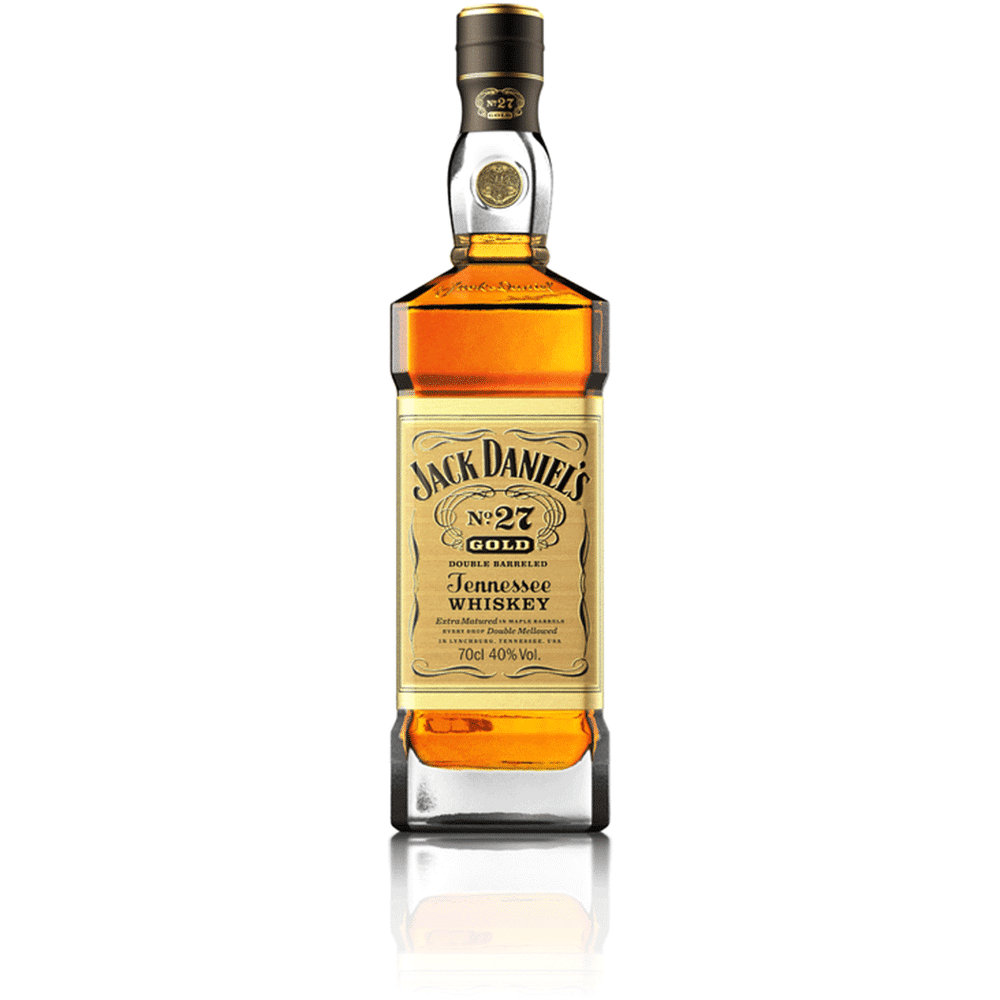
Jack Daniel’s gets hit with the double whammy of having another whiskey that comes in a fancy box that gets to set next to its brother. Jack Daniel’s No. 27 actually goes through a few more processes than Sinatra Select.
It gets re-barreled into a maplewood barrel and then charcoal filtered a second time before bottling, yet it costs a bit less. Perhaps a reason it costs less (MSRP: $100) because it’s bottled at 80 proof instead of 90 like Sinatra Select, but honestly that second barrel treatment would add considerable expense.
But enough with the talk of why the cost may be somewhat justified, let’s just focus on why it sets on the shelf. In short, with this whiskey being bottled at only 80 proof, the improved and unique flavors it could have had at a higher proof are simply washed away.
Pour this bottle into a glass side by side with its sibling, Jack Daniel’s Old No. 7 and tell me that there is an $80 difference in taste. You can’t. And that’s why this bottle goes nowhere fast.
Knob Creek 25th Anniversary and Knob Creek 2001 Limited Edition
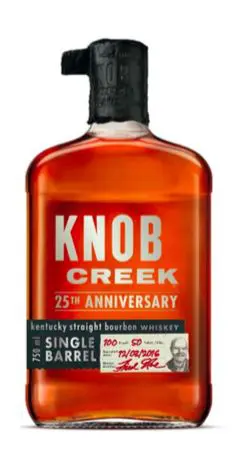
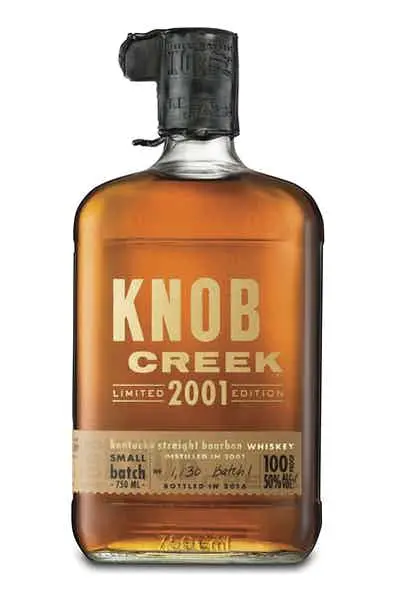
Just to be clear, these are two different bottlings of Knob Creek. But the reason why they’re together here is because they both typically set side-by-side with each other on any given shelf. The differences?
The Knob Creek 2001 Limited Edition is 14 years old and bottled at 100 proof (there are 3 batch variations though). The 25th Anniversary Knob Creek is 12-13 years old and is bottled anywhere between 122-125 proof. Both releases are in the neighborhood of $120.
This should need no explanation if you’ve read my take on Knob Creek’s 15 year old Limited Edition. The reason is because Jim Beam is still releasing single barrels of Knob Creek bottled at 120 proof, aged anywhere from 9-15 years old and with an MSRP of $50.
On top of all of those stats, the bottom line is that while Knob Creek and Jim Beam products are always generally very good, they’ve never been regarded as anything exceptional. And for $120, you deserve exceptional.
St. Cloud Bourbon
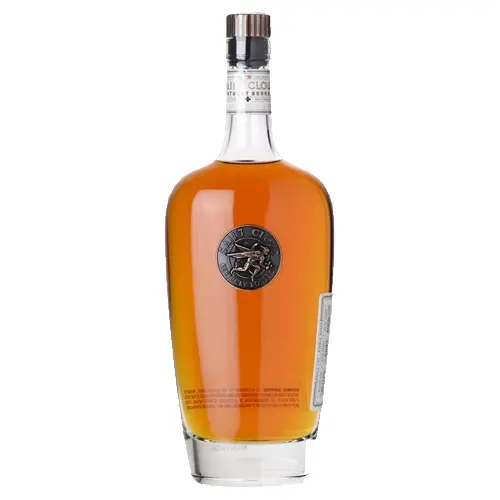
Depending on the bottling, this brand has released whiskey anywhere from 7 to 13 years old. Carrying a pricetag anywhere from $100-$270, the bottle you’re looking at certainly looks impressive, even attractive, yet something about it makes you wonder if this is legitimate bourbon.
It could be due to the fact it doesn’t look or sound like any other whiskey out there. And maybe that was Ray Walker’s hope.
The name Ray Walker is synonymous in wine circles as a sort of con artist. Never really delivering what has been promised.
And when a guy like that puts out a whiskey whose source is hidden (even going as far as to be shady about the contents of the mashbill), then maybe you should not ignore your first instinct to “pass.”
Reviews are generally average to above average across the review websites, but that is where the real question comes into play: does the bourbon within even come close to the price that is being asked? You already know the answer to that.
Kentucky Owl Dry State
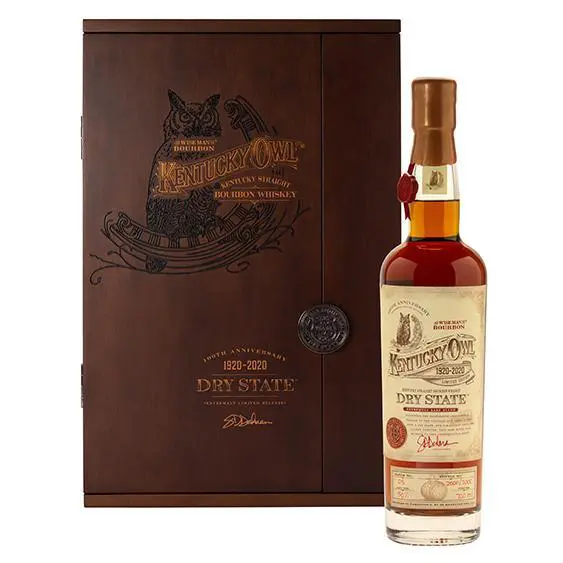
Kentucky Owl hits our list for a third time with their 2020 release of “Dry State.” Coming in at just above 100 proof and wearing absolutely no age statement (not even a hint as to an age statement), this $1,000 bottle was designed to see just how insane whiskey enthusiasts are.
The answer so far has been “pretty darn insane” as there have been many of these bought. But Dry State is not selling in stores where smart customers shop. Just like Kentucky Owl Confiscated, the decision to not put an age statement on this bottle is baffling… and telling.
So I’m going to lay it all out there. Dry State may contain a lot of really old barrels. Or maybe not. Dry State may contain exotic and sought after bourbon from the highest-regarded Kentucky distilleries.
Or maybe not. Dry State had no media release, is too expensive for stores to give out samples or for 99% of bars to carry.
So nobody except for the most frivolous whiskey drinkers will be able to taste it. My guess is that it does contain barrels as old as 18-20 years old, likely with a majority from Barton.
But as Dixon was blending it, he found the blend to be so dry and devoid of sweetness that he had no choice to blend in young bourbon to balance it out.
Then he proofed down the whole batch until it finally didn’t taste like leather coated with sawdust and musty tobacco. Am I guessing on how this process went?
Absolutely, but that’s what the customer does when they see a $1000 bottle on the shelf with absolutely no information behind it.
Peerless Rye Whiskey
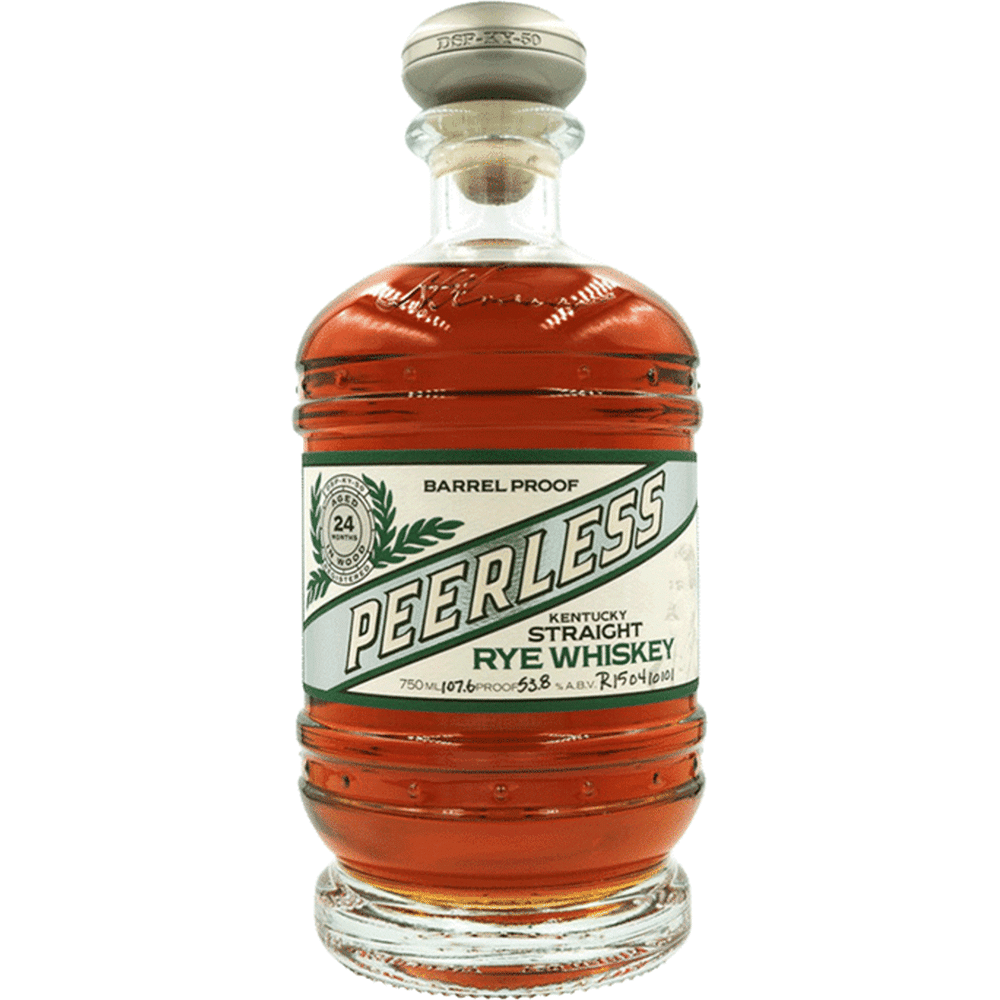
It feels awful to put such a young company like Peerless, who is trying to do all of the things right, into this list. Yet, starting in 2018 when their first bottles of 2 year old rye whiskey began to hit the shelves at over $100, many enthusiasts did a double take.
And for those enthusiasts that bought one, they did another double take after their first sip. This young rye whiskey had *some* potential, but it was not worth anywhere close to its price.
At best, the better reviews out there could only compliment that it “smelled nice” and “showed potential” and that was about it. Even after 2 years of additional age (which it turned in 2020), most enthusiasts still say it’s not quite there in terms of quality for the price.
In fact, equally young rye whiskey from startups like New Riff, Willett and Michter’s, were already releasing some absolutely fantastic cask-strength 4 year-old rye whiskey for about $30-$50 less than Peerless.
It seems that year after year, the value for Peerless never quite meets the expectation one would expect when plopping down a Benjamin (or more) for their bottle.
I hope it goes their way in the future, but for now, pay attention to the age statement on those bottles and never buy one that’s below 4 years old.
Featured Products
- Neat Traveler

- View Larger
- Description:The Aged & Ore Neat Traveler is a complete travel kit for spirits. We combined our widely praised Neat Glass with one of our 3oz Flight Bottles and housed them together in a custom EVA travel case. Perfect for a night away with your favorite pour. The tie
- Bottle Flight

- View Larger
- Description:The Aged & Ore Bottle Flight is a premium set of 4 custom silicone wrapped glass bottles designed to transport and share samples of your favorite spirits. The flight bottles come in a custom EVA travel case that fits perfectly in any small bag. An Aged &
- Travel Bundle
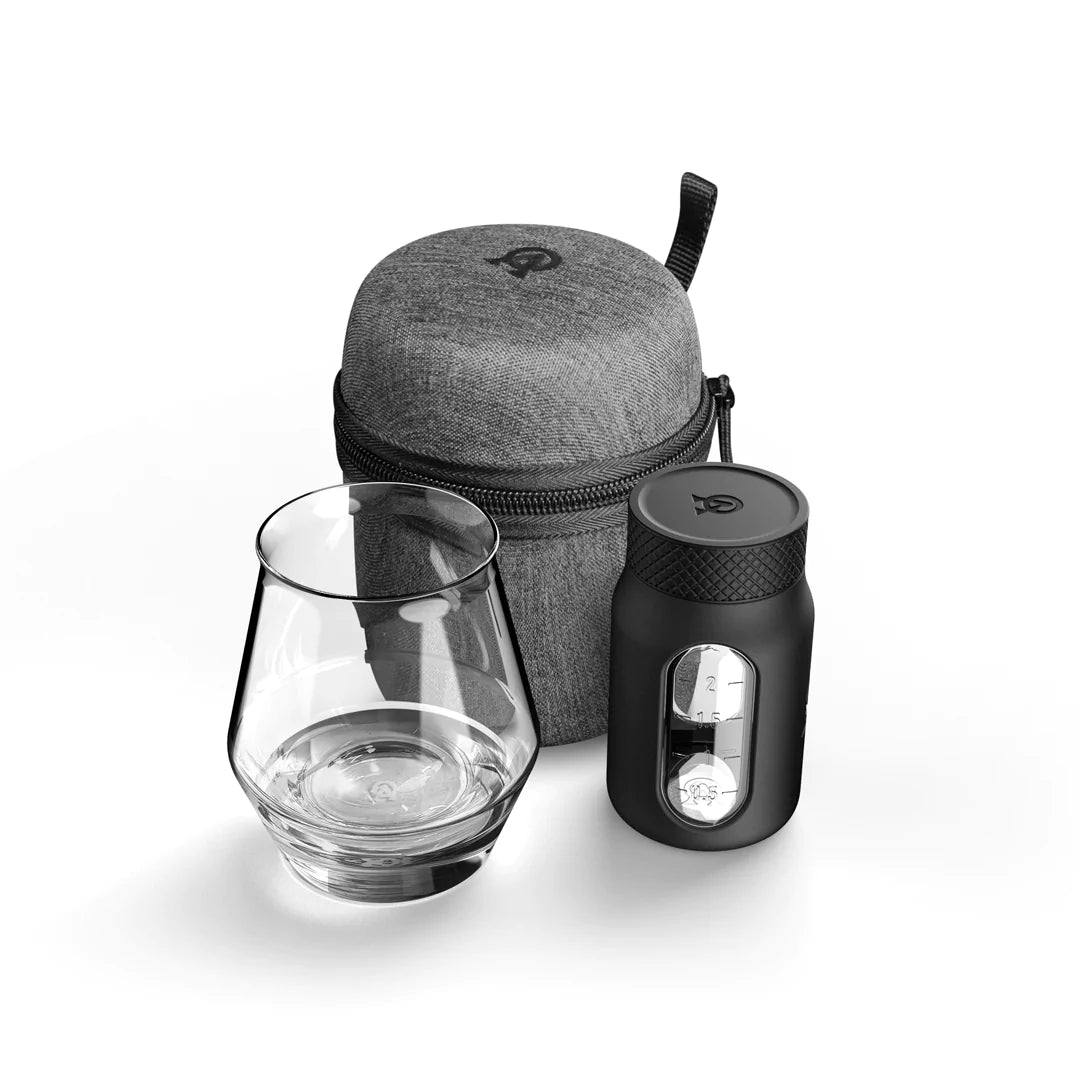
- View Larger
- Description:This Bundle combines two of our crowd favorite products, creating the ultimate travel bundle to bring along your favorite spirits and glassware. Bundle Includes: Neat Traveler (Gray) Bottle Flight (Gray) Note: This bundle is only available in gray and col
*Bourbon Culture is reader-supported. When you buy through links on our site, we may earn an affiliate commission.

Fred
Saturday 28th of January 2023
KC 15 a shelf turd? Now that's a hot take! Surprised Booker's isn't on here as well, lol.